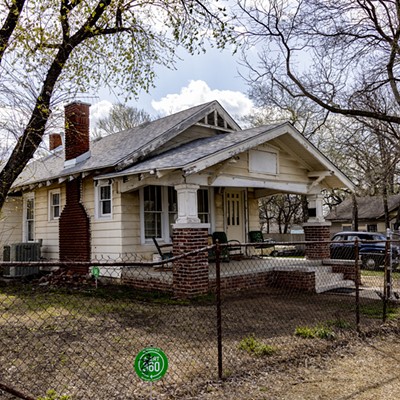Time travel may be the stuff of Hollywood, but one gets pretty darn close to the real thing by visiting Guthrie, Oklahoma's first state capital.
The Guthrie Historic District was named a National Historic Landmark in 1999 due to the astonishing number of well-preserved commercial and residential architecture of the late 19th and early 20th century. And it's all yours for less than the price of gourmet coffee and an hour of your time.
The First Capital Trolley tour takes off curbside at the Capitol Publishing Museum located at Second and Harrison at the top of the hour, from 10 a.m. to 4 p.m. Monday through Saturday most of the year. The cost is $3 for adults, $1 for children under 12, and free for children 2 and under.
The air-conditioned ride takes time travelers around the historic district on a narrated tour to see not only the standing landmarks and legends, but also the ghostly spots of razed buildings and sites whose purpose never went from vision to creation.
Such a place is the spot where the Territorial University was slated to be built before Guthrie was told it could not have both the state capital and the major university. Guthrie picked the capital, and we know what happened after that.
When government oversight went from the national level, which had approved Guthrie as the capital, to the state level after statehood, a vote (and a relocated seal) meant Oklahoma City became the capital in 1910, and by that time, the Territorial University had made its home in Norman.
Visitors will also drive by Highland Park, the home of the first Bedlam football game where the Sooners beat the Oklahoma A&M Aggies 75-0 in 1904.
Moments like those make the tour somewhat bittersweet for a town once hailed as the "Queen of the Prairie." Once brimming with possibility, historic Guthrie was stripped of its economic prowess one decision at a time. Its dreams literally went south. It's interesting to think what the town might be like today if things had gone in their favor.
Yet it's that very history that provides Guthrie's shining attraction, and what remains makes the ride memorable. Thanks to better early urban planning, many of Guthrie's original architecture still stands, unlike in Oklahoma City. Springing up to become one of the largest cities west of the Mississippi in the days after the 1889 Land Run, Guthrie was known for its beautiful red brick and native sandstone buildings.
The city has the same population today that it had in 1889, hovering at 10,000 people. You'll even drive by the site of the Federal Land Office where folks registered their claims.
The tour guide explained the significance of buildings such as the Pollard Theatre, 120 W. Harrison, which was built in 1901 as a furniture store and then became a funeral home before becoming the state's premier vaudeville house by George A. Pollard in 1919. The theater is best known for its annual "A Territorial Christmas" play.
See where Tom Mix used to tend bar at the Blue Bell Saloon before he became the "King of the Cowboys," as the first Western megastar in Hollywood. You can dine and drink in the same establishment once visited by President Roosevelt and Will Rogers. The Blue Bell began as a tent in 1889 and later became a saloon notorious for gambling, liquor and Miss Lizzie's Bordello on the second floor.
The greatest visual treat on the tour is the wide selection of architecturally significant homes. The movers and shakers of the late 1800s and early 1900s spent between $5,000 and $10,000 on these magnificent homes, a lot of money in those days. Home styles showcased include Queen Anne, Greek Revival, Gothic Revival, Victorian, Prairie and Craftsman. Some of the homes even boasted a second-story ballroom for entertaining.
The most impressive home on the tour is the Dominion House, a former Masonic home for children built in 1923 and closed in 1978. It was sold and renovated in 2000. The immaculate property hosts weddings and receptions, complete with an outdoor venue, chapel and grand ballroom.
After the tour, visitors can continue their trip down memory lane at one of the many museums, including the Oklahoma Territorial Museum, the State Capital Publishing Museum and the Oklahoma Frontier Drugstore Museum. Sports enthusiasts will enjoy the memorabilia from around the state at the Oklahoma Sports Museum.
If you're interested in more than a day trip, Guthrie is the also bed and breakfast capital of Oklahoma, with 13 elegant choices in the historic district.
For more information, visit www.guthrieok.com. No reservations are required for the trolley tour. Check the website for specific tour times. "Malena Lott







